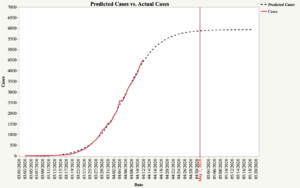There is a lot of conversation around the effectiveness of the statistical models being used to understand the COVID-19 pandemic. Many people seem to be concerned that current models have resulted in predictions that vary significantly. While it is impossible to discuss all of the issues surrounding modeling, there are a few points that may help you better understand what to expect from these models.
First, it is important to remember the words of the great statistician George Box, “All models are wrong but some are helpful.” While everyone would like to know when the number of active cases and associated deaths will decrease, it is important to remember that the modeling of COVID-19 involves a dynamic system with many contributing factors. For this reason, models must include many important factors and the interactions between these factors.
There are a variety of approaches being used to model the path of COVID-19. In a future post, I will discuss some of these models and the factors that they include. I will also post results from several models so you can see how various models provide different types of valuable information. The following is a model for my home state of North Carolina. This simple model contrasts the difference between the actual number of reported COVID-19 cases versus the predicted number of cases. I am posting the results of this model in light of the discussion today by the NC Governor that would allow businesses to reopen. As can be seen from the graph, we may not see the number of cases level off until the first of May. What would you do after viewing this model?

Remember, your actions have a direct impact on when we actually reach the peak of the curve. During the next several weeks it is essential that we continue to practice social distancing and frequently washing our hands to help shorten the curve and reduce exposure levels.
